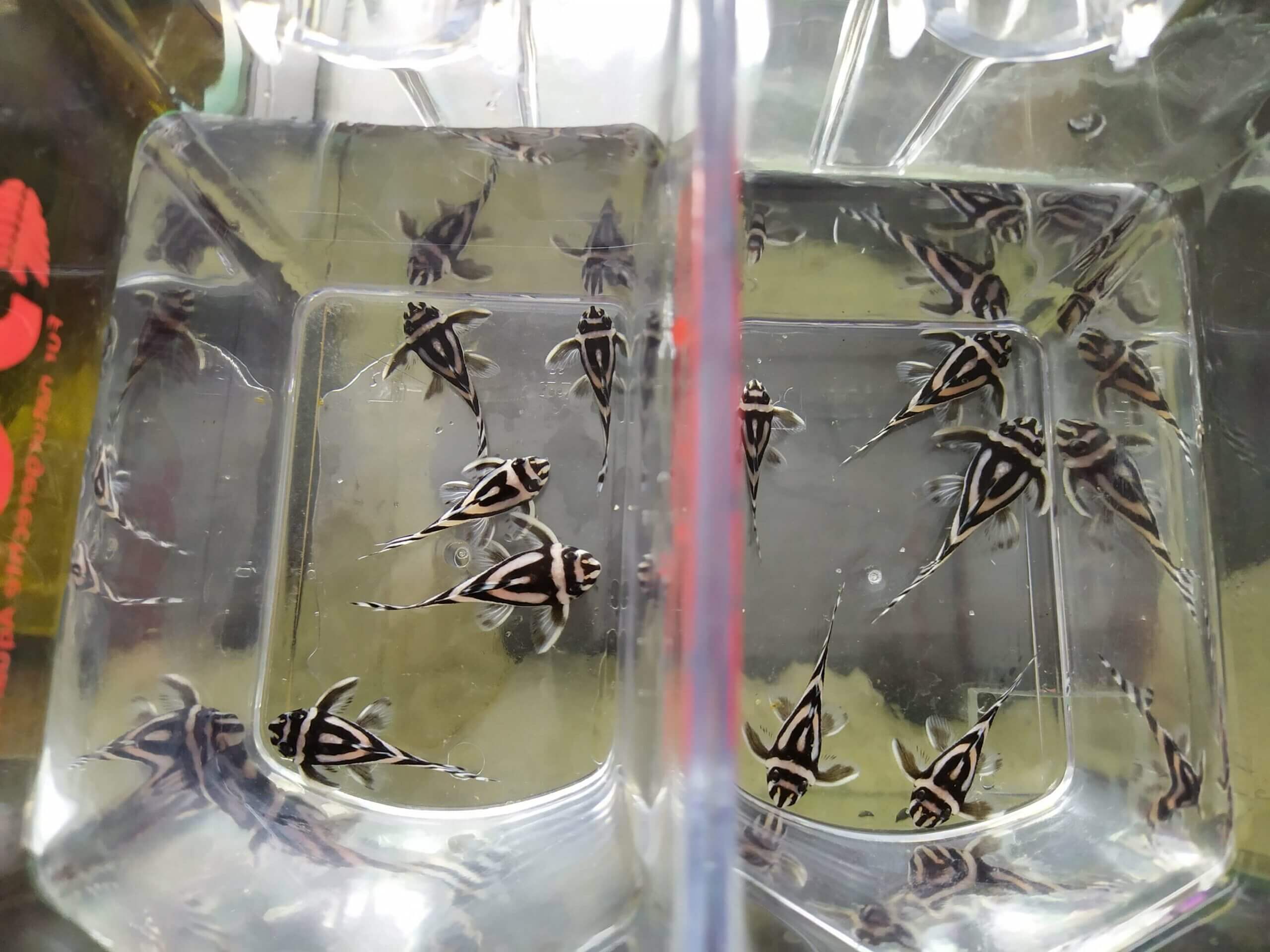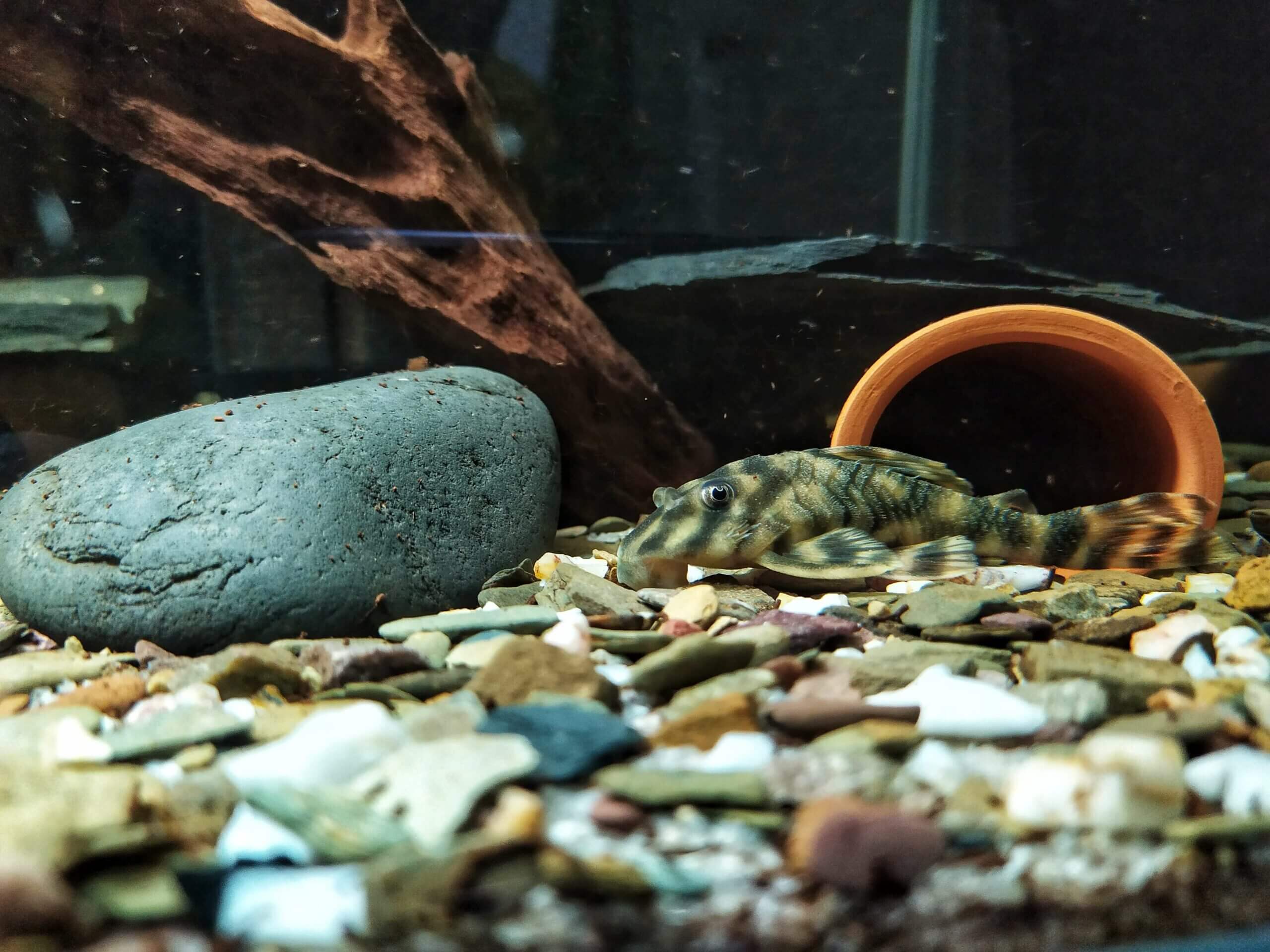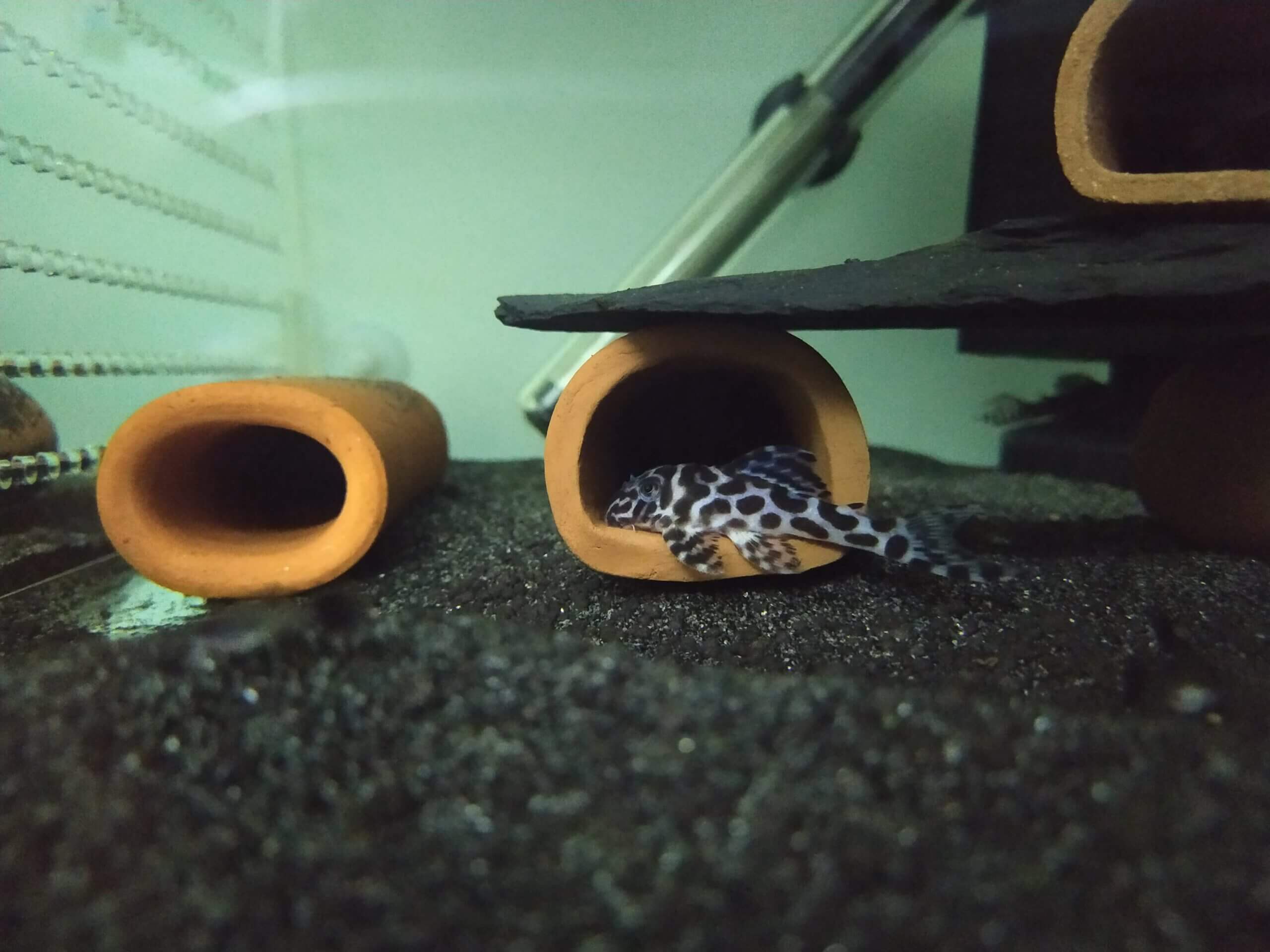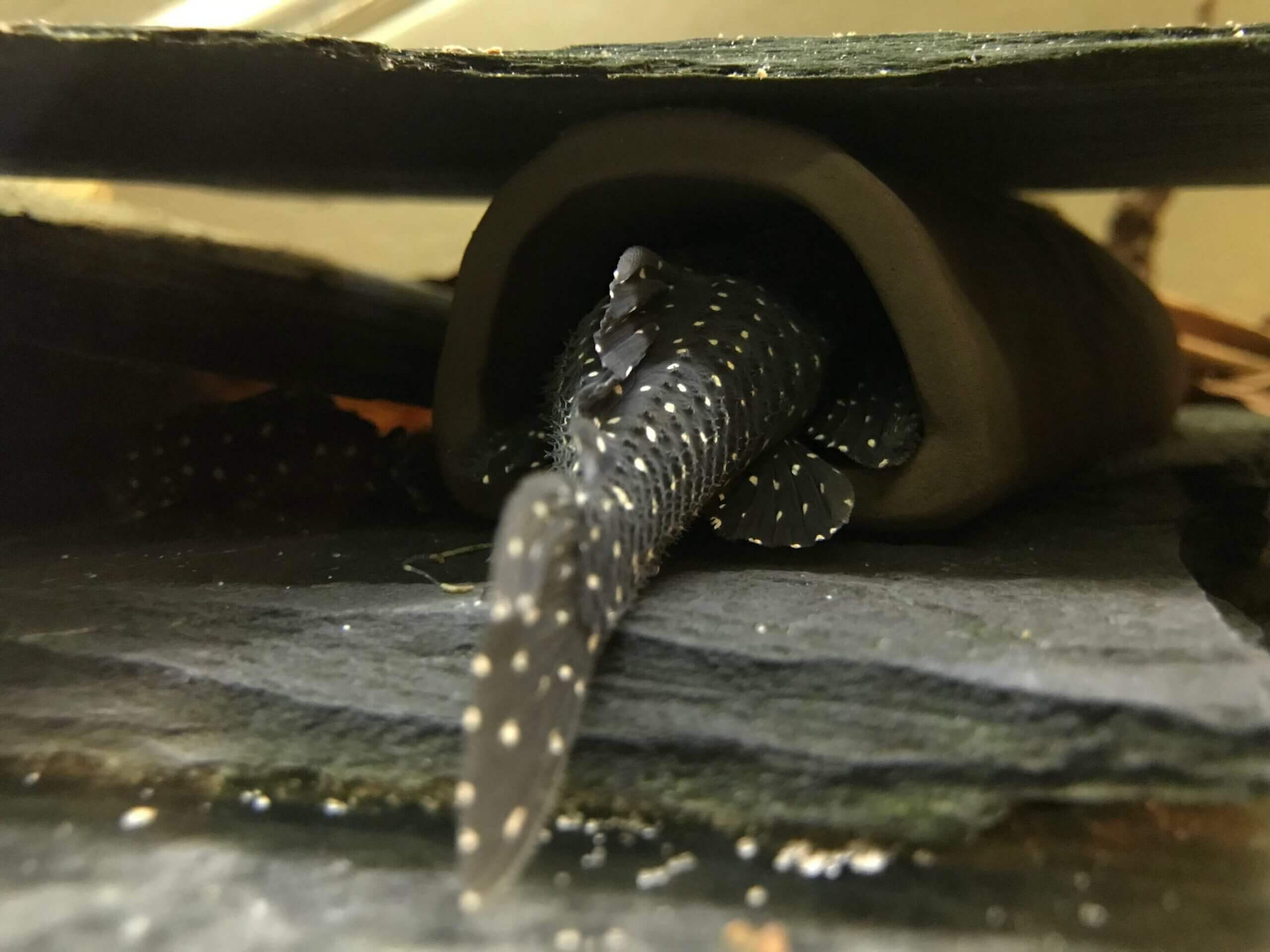The basics of breeding Plecos
Some will say that breeding plecos is a complicated task, others will find it rather simple. Actually, when the right conditions are there, breeding tends to occur naturally.
In this article, we will explain the necessary conditions for successful breeding. Note, however, that certain actions meant to increase the probability of breeding are not always successful. Similarly, it is possible that some breeders achieve good results without performing these actions. The key thing is to understand why we choose these methods. The advice given in this article allows for a percentage increase in probability and is by no means a foolproof recipe.
Even though there are species whose breeding is more difficult and requires very specific actions and extra care, let’s start with the basics of breeding loricariidae. We will focus on specific species in a future article.

Ideally, and for most of the loricariidae, you need to acquire a group of 6 to 10 specimens, according to the dimensions of the aquarium which will accommodate them. This will guarantee that you get several males and females. Let’s assume that the group will enter an aquarium whose biotope has been recreated or, at least, where the parameters of the species’ natural habitat have been respected. We also assume that the maximum length the species can reach has been measured beforehand so that loricariidae are not placed in undersized spaces. Before purchasing a group, it is therefore essential to study the needs of the species.
The acquisition of a group, composed of several males and females, will allow us to witness dominance behaviors, fight for territory and, later, courtship. These behaviors will certainly capture our attention and make us spend hours watching the aquarium. The more time we spend in front of our group, the faster we start to assign meaning to different behaviors and get to know our plecos.
To observe the most natural behaviors described above, we must prepare the right layout, including the famous breeding caves that are facilitators of the process itself. I like to use a ratio of one cave per specimen (maximum) and one cave per male (minimum). I can also remove caves that have never been used or replace them with others with a slightly different size or shape.



As a rule, these breeding caves are open on one side only (so that the male can block the female) and with dimensions adapted to the width and height of the adult species. These caves must also allow the entry of both specimens (male and female). Don’t waste too much time choosing the caves. Indeed, often, some of my fish preferred the caves that seemed unsuitable.

These caves should be distributed throughout the aquarium and not grouped in one area. Some of them should also have a flat stone or trunk on top to create a shadow at the entrance of them. Males usually choose the best caves and interested females like to stay near the males’ caves, often on flat stones or trunks and usually in a prone position.
In itself, these precautions are already sufficient for us to be able to successfully breed the chosen species in the medium term. Let’s always keep in mind that patience is a particular virtue of our hobby and needed in all types of projects in the underwater world! After following the steps above, let’s enjoy the project and avoid placing our hands inside the aquarium to make changes to the layout. Let’s give the group time to adjust and feel comfortable in their new environment. This wait can take a few months, but as mentioned above, most of the time the process is natural.
After making these arrangements (acquisition of the group – 6 to 10 units, confirmation of males and females, adequate layout with breeding caves and stability for a few months) and without observing courtship and breeding behaviors, it is time to perform small actions to stimulate the group. One of these actions is related to partial water replacements.
To understand this method, it is necessary to look at its natural functioning: in tropical countries, there are only two seasons in the year. The rainy season and the dry season. The former is characterized as a period of greater food abundance, favorable breeding areas and water quality, in contrast to the dry season. These two seasons can be reproduced in our aquariums through water changes and feeding management. I will now show a sequence of actions to better understand tropical climate reproduction:
Dry season simulation
- Reduce the number of water replacements (pay attention to water parameters to avoid accidents);
- Do not feed every day.
We are simulating a shortage that can last 3 to 4 weeks, adjustable according to our experience;
Anticipate the proximity of rain and especially of thunderstorms (big storms).
- With the proximity of the rains, a drop in atmospheric pressure is recorded. This is felt by most living beings;
- Program the partial water replacement during rain or after – near the fluctuation of the atmospheric pressure. There are, moreover, free applications that show us the values of atmospheric pressure.
Rainy season simulation
- Replace at least 50% of the total volume of the aquarium, ensuring a maximum drop of 3 to 4ºC in water temperature;
- Feed every day with a quality food comprised of a high protein load (handle this food carefully in the case of predominantly herbivorous animals, such as species of the genus Ancistrus).
- Simulate the abundance of food preparing the fish for the breeding act.
This simulation will be able to go into great detail in order to reproduce the season notes. Some even simplify the process and just play with the water replacement, without any fluctuation of the food. All of this will be the result of experience and each individual case, because what works for one group may not work for another.
The basic actions introduced in this article allow optimal breeding of loricariidae. In my case, these actions, with more than ten different species, have been the most efficient ones.
For species whose captive breeding is more complex or has even never been documented, we will have to take more specific measures related to the number of specimens, the layout of the aquarium, day/night temperature fluctuations, the use of rearing resins or other measures that would be the subject of several articles.
Observe the behavior of your fish and get curious about their natural habitat. This way, you will easily understand their needs and successfully address them, which will certainly help breed them.


By Tiago Ralha
More than 30 years of experience as an aquarist.
Founder of the Paraíso Pleco project and the Encontros de Aqua Aficionados event cycle.
Author of two e-books on fish breeding and the basics of pleco breeding.